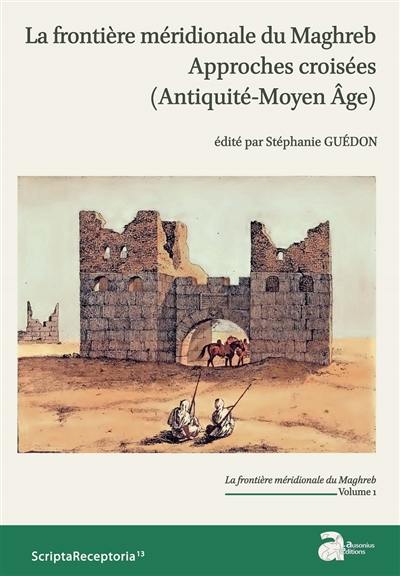
Serie : La frontière méridoniale du Maghreb. Vol 1
Collection(s) : Scripta receptoria
Paru le 14/03/2019 | Broché 242 pages
Public motivé
La frontière méridionale du Maghreb. Approches croisées
Les conflits auxquels elle reste liée montrent combien la question de frontières au Sahara se pose encore de façon aiguë. Elle invite à réfléchir sur les processus qui ont conduit à lier l'histoire du Sahara à la notion de frontière, entre le moment où fut instituée pour la première fois, par Rome, une « frontière » sur la bordure septentrionale du Sahara, et les bouleversements politiques, sociaux et culturels participant au Moyen Âge à la construction de l'espace saharien. Chacune des formes de la frontière établie sur la bordure septentrionale du Sahara entre l'Antiquité et le Moyen Age induit une problématique particulière, que le jeu de la longue durée permet d'inscrire dans une réflexion géohistorique plus générale posant la question d'une construction méditée de la frontière et de son évolution, au sein d'une entité spatiale et géographique unique.
Comment la frontière établie en bordure saharienne du Maghreb a-t-elle pris forme à l'époque romaine ? Comment l'arrivée de l'Islam et la multiplication des pouvoirs en place au Maghreb ont-ils modifié la perception des confins désertiques du Maghreb et de la frontière, et conduit à la déplacer, dans un mouvement sans précédent, vers le sud, par des processus originaux et complexes impliquant des motivations politiques, économiques et religieuses entre lesquelles il n'est pas toujours facile de faire la part ? En quoi les pouvoirs en place ont-ils investi de nouvelles formes de représentation de la frontière, dans leur quête de légitimité ? Telles sont les questions que les études rassemblées dans cette ouvrage proposent d'aborder, à travers trois axes de réflexion. Les textes réunis dans une première partie invitent à réfléchir sur un tropisme saharien dans la construction d'un paradigme de la frontière. Dans une deuxième partie sont envisagés les processus de construction et de revendication de la frontière par les pouvoirs en place. Enfin, la troisième partie de cet ouvrage propose une étude régionale sur l'Algérie centrale, du Hodna à Biskra.
The conflicts to which it remains linked show how much the issue of frontiers concerning the Sahara still arises actualy. It invites us to reflect on the processes which resulted in binding the history of the Sahara to the concept of border, between the moment when was instituted for the first time, by Rome, a « border » on the northern edge of the Sahara, and the political, social and cultural upheavals involved in the Middle Ages in the construction of the Saharan space. Each shape of the border established on the northern edge of the Sahara between Antiquity and the Middle Ages induces a particular questioning, that the Longue durée makes it possible to inscribe in a more general geohistorical reflection on the meditated construction of the frontier and its evolution, within a unique spatial and geographical entity.
How did the border established on the Saharan edge of the Maghreb take shape in Roman times ? How did the arrival of Islam and the multiplication of powers in the Maghreb have changed the perception of the desert borders of the Maghreb and the frontier, and led to move, in an unprecedented movement, to the south, by original and complex processes involving political, economic and religious motivations between which it is not always easy to distinguish ? How have the powers in place invested new forms of border representation in their quest for legitimacy ? These are the questions that the studies gathered in this book propose to address, through three axes. The texts gathered in a first part invite to reflect on a Saharan tropism in the construction of a paradigm of the border. In a second part are considered the processes of construction and claim of the border by the powers in place. Finally, the third part of this book proposes a regional study on Central Algeria, from the Hodna to Biskra.